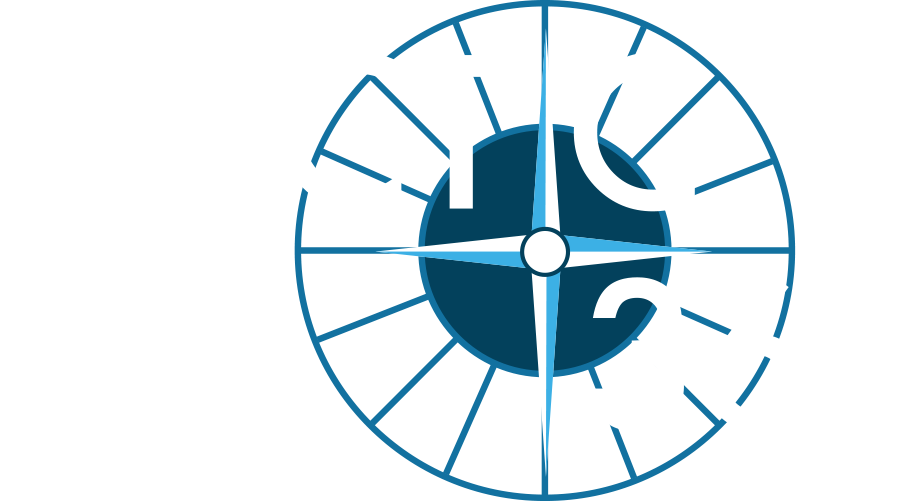
Missing: Canada’s Vision for the North
Dr. Jessica Shadian’s Guest Column “Missing: Canada’s Vision for the North is available here.
This past September (2020), (former) federal Minister of Innovation, Science and Industry, Navdeep Bains published an Op-Ed in Policy Options about Canada’s distinctly unique opportunity to lead the world in the electric vehicle industry. What he called ‘mines to mobility’, would couple Canada’s abundance of critical minerals required to produce electric batteries with its ongoing world-class research and innovation economy.
Yet, when it comes to Canada’s truly competitive advantage for becoming a global leader in innovation it is time to break out of the usual mould and go where few Canadians go: the North.
One just needs to glance at Canada’s Nordic Arctic neighbours to see that there is precedence. The often-made arguments as to why the North is an inopportune place for everything from living to working to starting a business or building a road is its real advantage. That the North is vast, cold, remote, dark six months of the year, has harsh weather and a critical infrastructure gap is one of Canada’s biggest innovation assets. Add to this, that the North is home to many of the critical minerals that China and others want for building technologically advanced infrastructure. The North could be Canada’s unrealized key to leap-frog existing infrastructure and industries and play a global leadership role in 21st innovation. The question is whether we have the ambition or the conviction to lead.
MISSING: CANADA’S VISION FOR THE NORTH
COLD IS THE NEW HOT
Canada could lead the world in the electric car industry. In September 2020, the Department of Innovation, Science, and Industry announced Canada’s “mines to mobility” advantage. Canada is one of the few countries in the world with an abundance of minerals needed to make the next generation of electric batteries. “Mines to mobility” would couple Canada’s mining sector with its ongoing world-class research and innovation economy, creating a unique opportunity for Canada to lead the world in the electric car industry. However, counter to the spirit of being innovative, the idea itself focused on conventional go tos such as a test road in Ottawa and a research centre in Waterloo.
When it comes to Canada’s truly competitive advantage for becoming a global leader in innovation it is time to break out of the usual mould and go where few Canadians go: the North.
In today’s climate, the often-made arguments as to why the North is an inopportune place for everything from living to working to starting a business or building a road is its real advantage. That the North is vast, cold, remote, dark six months of the year, has harsh weather and a critical infrastructure gap is one of Canada’s biggest innovation assets. Add to this, that the North is home to many of the critical minerals that China and others want for building technologically advanced infrastructure.
GO NORTH WHERE EXTREME WEATHER IS OPPORTUNITY
If the idea that Canada’s North is its innovation opportunity sounds like naïve bluster or wishful thinking, then it is worth turning attention to Canada’s Nordic Arctic neighbours. When gazing North, rather than see destitution, challenges, or overwhelming impossibility, the Nordic Arctic countries see the future of 21st century innovation. Moreover, looking at what is happening in the Nordic Arctic reveals how much more there can be to Canada’s mines to mobility than merely electric cars; if Canada would only look to its own North as well.
DRIVING ON THE TOP OF THE WORLD
Arctic Finland is home to the Arctic VTT Technical Research Centre, the country’s latest addition to its Norwegian-Finnish E8 interstate Arctic highway testing track. The track, approximately 50 km of the public interstate highway, is now available to companies around the world for autonomous vehicle testing. On a road that is often snowy, icy, dark for six months of the year, as well as windy during extreme weather there are few places that are more optimal for improving automotive driving for winter weather conditions. Going one step further, the test road also includes built-in sensors to measure for factors such as vibration, weight, pressure, acceleration, and surface slipperiness for trucks and other driverless vehicles.
Canada could take a page from the Finnish model in thinking about how to make its mines to mobility truly innovative. A world class research centre could be built in collaboration with the Northern mineral industry. By making an innovation hub in the North, automotive vehicle research could also focus on improving battery efficiency and enhancing battery life in cold weather, a major challenge for electric cars.
“Multi-purpose infrastructure could create the financial incentives to finally build all-weather roads to resources… ”
The greatest challenge for Canada’s Northern critical mineral industry is its lack of infrastructure and equal lack of financial incentive to build it. Multi-purpose infrastructure could create the financial incentives to finally build all-weather roads to resources which could also serve as test tracks to improve automotive driving capacity in cold, dark, and icy weather conditions. Moreover, roads could connect to isolated fly-infly-out dependent Northern communities. Rather than costs incurred, new smart roads could generate revenue from the data collected and test track users for invested parties from mining companies to local communities and Territorial governments.
A SHORTAGE OF HOMES TO SMART HOMES
An excerpt from The Barents Observer’s article on the Longyearbyen project showing the construction progress. Photo links to original article.
At 77 degrees North, Svalbard’s capital, Longyearbyen, is now home to the construction of three blocks worth of new apartments. Looking to gain knowledge for infrastructure construction, Longyearbyen’s housing project includes the installation of sensors into the ground to measure the impacts of steel construction on the changing state of permafrost. The information gathered will then be incorporated into its next housing projects. Altogether there will be 60 new apartments over 8,000 square meters.
The Canadian North is not only home to existing iron-ore (used to make steel) mines but in cases such as Baffinland this also includes Inuit communities with a severe shortage of safe, affordable, and available housing. Thinking innovatively, Canada could build a world-class innovation research centre in the North focused on construction engineering to address the impacts of climate change on infrastructure. Equally, including Northern communities in this research, it could be a critical opportunity to help fill in the horrendous housing crisis that plagues the whole of the Territorial North and attract much needed capital North though public-private partnerships.
“Given that MIT researchers have been able to create 3D printed houses that can be self-built on other planets, surely, there is every reason to think that Canada can build an innovation centre here on Earth, in the North.”
Given that MIT researchers have been able to create 3D printed houses that can literally be self-built on other planets, surely, there is every reason to think that Canada can build an innovation centre here on Earth, in the North. It could even become a global institutional leader in the future of construction materials equipped for climatic changes already underway and to come around the world.
REMOTE SURGERY: FROM REMOTE TO INNOVATION EPICENTRE
In another Arctic region in Norway, the city of Tromsø is billing itself as a future leader for Northern and remote health and biotechnology. Norway sees its North not only as the receiving end of medical innovation but equally as an industry epicentre.
Given the massive critical shortage of hospitals, medical equipment, personnel, beds, etc. in the Canadian North, a Northern medical innovation research centre comes with a multitude of opportunities. It could equally provide desperately needed additional medical care for Northerners while advancing the field of telemedicine and remote surgery, entirely. Understanding that Canada’s critical minerals are needed to build new medical technologies, with vision, Ottawa’s “mines to mobility” could go well beyond electric transportation to include an entire range of innovation sectors connected to Canada’s critical minerals.
GAZING NORTH OUTSIDE THE URBAN TECH BOX
“Canada’s missing Northern innovation vision is on the cusp of being Canada’s missed opportunity.”
Canada’s missing Northern innovation vision is on the cusp of being Canada’s missed opportunity. The Canadian North comprises over 40 percent of Canada’s land mass which today is crippled by a gaping absence of critical infrastructure. The stagnation this causes not only equates to inadequate access to basic health services or economic opportunity but also to ever increasing costs for Ottawa just to keep its Northern citizens in a perpetual state of welfare.
The North could be Canada’s unrealized key to leap-frog existing infrastructure and industries and play a global leadership role in 21st innovation. The question is whether we have the ambition or the conviction to lead.
This is a re-post of the original article from The Growcer, and can be found here.
Recent Posts
Toronto Arctic360 conference tackles business development, international cooperation
Toronto Arctic360 conference tackles business development, international cooperationTORONTO — Arctic360, the Canadian northern affairs conference, kicked off Tuesday with this year’s event focused on both business and the changing geopolitical context in
The Hill Times Policy Briefing
The Hill Times Policy Briefing Opportunity to advance Arctic infrastructure strategy in response to increased defence threats, say NDP MP, CSG senator. Arctic360 argues that Canada needs an Arctic infrastructure strategy
Arctic360’s Jessica and Madeleine testify
Arctic360’s Jessica Shadian and Madeleine Redfern testify to the House of Commons Standing Committee on National Defence on Arctic SecurityThey discuss the crucial role that think tanks play in helping facilitate track
Strengthening the
North American Arctic
Arctic360 is dedicated to educating and engaging with the public about the pressing issues and potential solutions for building a prosperous and sustainable Arctic region. Contact us if you have any questions about our activities or if you would like to be more involved.




